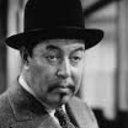Narrowing of thoraco-lumbar spinal canal in achondroplasia.
Mo kle
Abstrè
The incidence of neurological deficits in achondroplastic subject is by no means negligible. We considered the clinico-radiological and therapeutic data of 35 achondroplasic patients (5 personal cases and 30 published in the available literature) harbouring myelo-radicular deficits related to narrowing of thoraco-lumbar canal. There was no significant sex prevalence. The clinical symptoms appear most frequently in the III or IV decades of life. Actually morphological anomalies of the spinal canal are already present at birth in achondroplasic dwarfs, and signs of cervical cord involvement are not uncommon in achondroplasic children. The delayed occurrence of clinical symptoms related to narrow toracho-lumbar canal may be explained by the pathogenetic role of acquired cofactors as prolapse of intervertebral disks and for degenerative spondyloartrosis. The clinical history is usually of insidious onset. Most frequent symptoms are motor weakness of the lower limbs (82.8%) and low-back pain (77.1%). Sensory and/or sphincter disturbances appeared to be less frequent (about 40% of the examined subjects). Plain X-rays, myelography, CT, CT-myelography and MRI are the diagnostic examination of choice. Surgical treatment consists of anterior decompression with fusion, when thoraco-lumbar kyphosis is prevalent, and/or posterior decompression, when the symptoms are mainly caused by canal stenosis. From the prognostic point of view, two groups of patients are recognized, in relationship to the presence of marked dorsal kyphosis. Those with kyphosis showed almost invariably poor functional results. In the remaining ones the results were satisfactory, provided that the clinical history lasted less than 3 years and the symptomatology was not already too advanced.


